-

-
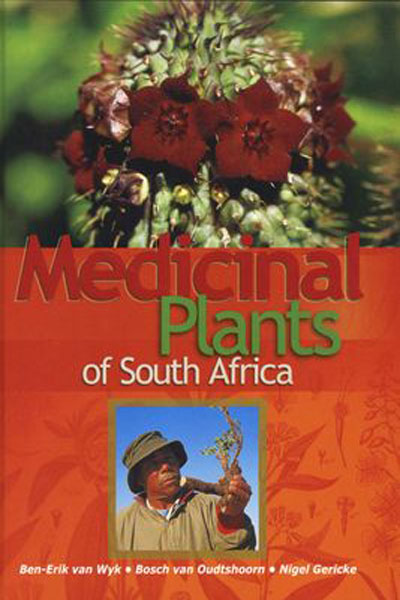 A photographic guide to the most used and best-known South African plant medicines, including their botany, main traditional uses and active ingredients. detailed species descriptions of more than 150 medicinal plants and their close relatives, or other species used in a similar way. Each entry includes the following information: a description of the plant, the plant parts used, medicinal uses, preparation and dosage, active ingredients, and pharmacological effects.
A photographic guide to the most used and best-known South African plant medicines, including their botany, main traditional uses and active ingredients. detailed species descriptions of more than 150 medicinal plants and their close relatives, or other species used in a similar way. Each entry includes the following information: a description of the plant, the plant parts used, medicinal uses, preparation and dosage, active ingredients, and pharmacological effects. -
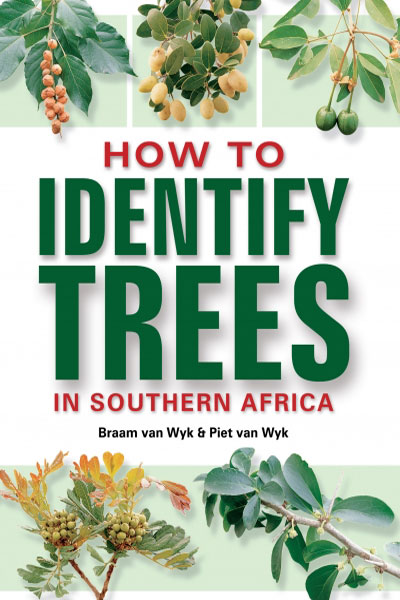 This book’s title says it all! Now in an updated second edition, it provides a clear understanding of how trees are constructed and what to look for when identifying a tree. The book is divided into two parts: • Part 1 describes and clearly illustrates the different parts of a tree and their role in tree identification. • Part 2 features a key to 43 tree groups, based on easy-to-observe stem and leaf features.
This book’s title says it all! Now in an updated second edition, it provides a clear understanding of how trees are constructed and what to look for when identifying a tree. The book is divided into two parts: • Part 1 describes and clearly illustrates the different parts of a tree and their role in tree identification. • Part 2 features a key to 43 tree groups, based on easy-to-observe stem and leaf features. -
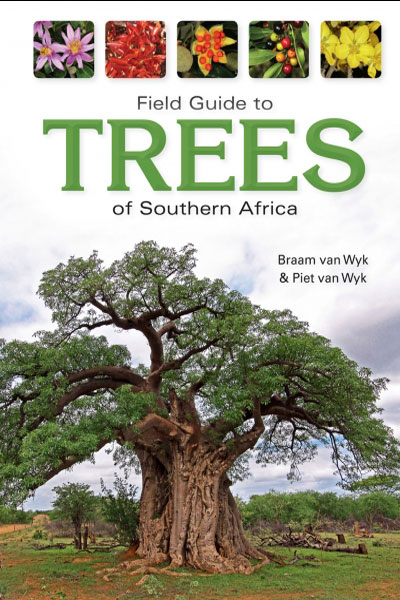 This comprehensively updated and expanded edition of the region’s best-selling field guide to trees offers much, much more than the highly successful first edition. Fully updated text (including additional species entries) and distribution maps, numerous new photographs and a new 87-page section of full-tree photographs makes this well-loved guide even more indispensable in the field.
This comprehensively updated and expanded edition of the region’s best-selling field guide to trees offers much, much more than the highly successful first edition. Fully updated text (including additional species entries) and distribution maps, numerous new photographs and a new 87-page section of full-tree photographs makes this well-loved guide even more indispensable in the field. -
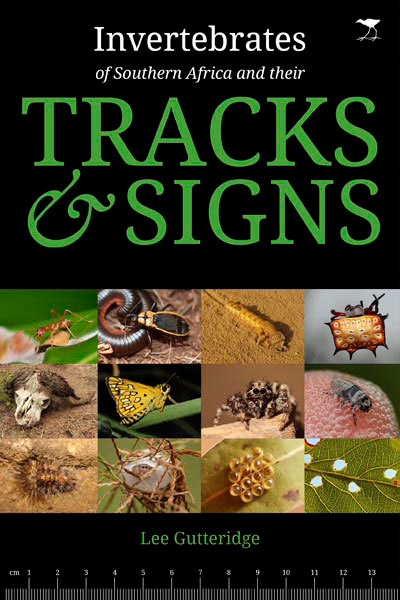 This book intensively covers a never-before-explored aspect of Southern African nature and is an essential new addition to the library of every nature lover. It was researched and written over the last four and a half years to open a door to a little-known micro-world that exists all around us. Invertebrates – which include commonly seen creatures such as butterflies, spiders, beetles, worms, and scorpions – are everywhere. The signs of their day-to-day activities are all around us if we know where to look. The life cycles and behaviours of many animals are discussed, with a special focus on interactions between mammals and invertebrates – a fascinating subject.
This book intensively covers a never-before-explored aspect of Southern African nature and is an essential new addition to the library of every nature lover. It was researched and written over the last four and a half years to open a door to a little-known micro-world that exists all around us. Invertebrates – which include commonly seen creatures such as butterflies, spiders, beetles, worms, and scorpions – are everywhere. The signs of their day-to-day activities are all around us if we know where to look. The life cycles and behaviours of many animals are discussed, with a special focus on interactions between mammals and invertebrates – a fascinating subject. -
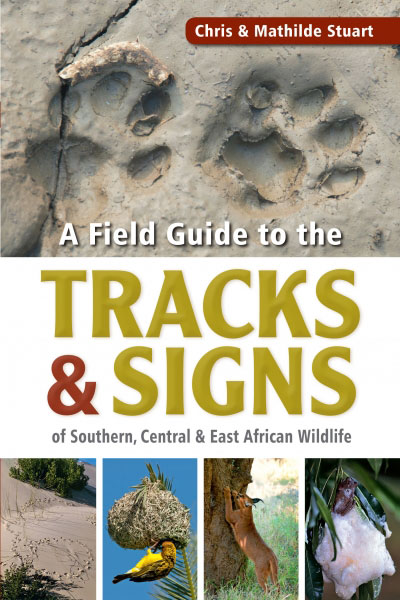 Originally published in 1994, A Field Guide to Tracks and Signs of Southern and East African Wildlife quickly became the standard reference to the subject in the region, reprinting many times. This new edition provides the most detailed coverage of tracks, droppings, bird pellets, nests and shelters and feeding signs, not only for mammals, but also for birds, reptiles, insects, and other invertebrates. Greatly expanded, this extensive update now features full colour throughout.
Originally published in 1994, A Field Guide to Tracks and Signs of Southern and East African Wildlife quickly became the standard reference to the subject in the region, reprinting many times. This new edition provides the most detailed coverage of tracks, droppings, bird pellets, nests and shelters and feeding signs, not only for mammals, but also for birds, reptiles, insects, and other invertebrates. Greatly expanded, this extensive update now features full colour throughout. -
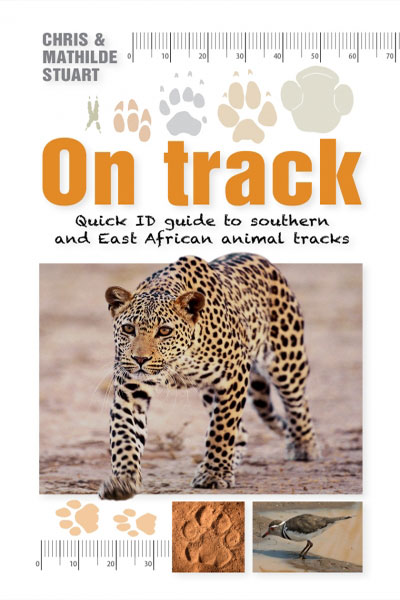 Following the success of the earlier Scatalog – Quick ID guide to southern African animal droppings, here’s another quick and quirky identification guide, this time to tracks of the region’s most commonly found mammals, but also includes tracks of reptiles, rodents, birds and insects. A simple key on the inside front cover directs users to any of 11 categories, such as ‘cloven hooves’, ‘paws’ or 'tramline-like trails. Nearly 100 animals or closely related groups of animals are depicted: for each, there’s a silhouette of front and back feet and a colour photograph of the track the average measurements for each track a short description of the track information about the circumstances and likely habitat Concise and to-the-point, this pocket-sized reference
Following the success of the earlier Scatalog – Quick ID guide to southern African animal droppings, here’s another quick and quirky identification guide, this time to tracks of the region’s most commonly found mammals, but also includes tracks of reptiles, rodents, birds and insects. A simple key on the inside front cover directs users to any of 11 categories, such as ‘cloven hooves’, ‘paws’ or 'tramline-like trails. Nearly 100 animals or closely related groups of animals are depicted: for each, there’s a silhouette of front and back feet and a colour photograph of the track the average measurements for each track a short description of the track information about the circumstances and likely habitat Concise and to-the-point, this pocket-sized reference -
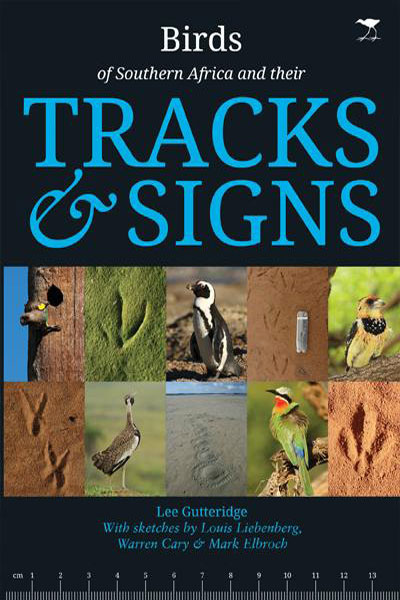 This book is a totally fresh approach to observing birds in Southern Africa. It affords you the opportunity to gather previously inaccessible and indecipherable information in the form of tracks and signs left behind by our avifauna. The book explores the unique details of the spoor, or tracks, of many species of birds. This is done in multiple ways including by observing their droppings, examining their feeding behaviour as well as their general nesting structures. It is remarkable how tracks and signs in nature help you to enrich your knowledge of bird species.
This book is a totally fresh approach to observing birds in Southern Africa. It affords you the opportunity to gather previously inaccessible and indecipherable information in the form of tracks and signs left behind by our avifauna. The book explores the unique details of the spoor, or tracks, of many species of birds. This is done in multiple ways including by observing their droppings, examining their feeding behaviour as well as their general nesting structures. It is remarkable how tracks and signs in nature help you to enrich your knowledge of bird species. -
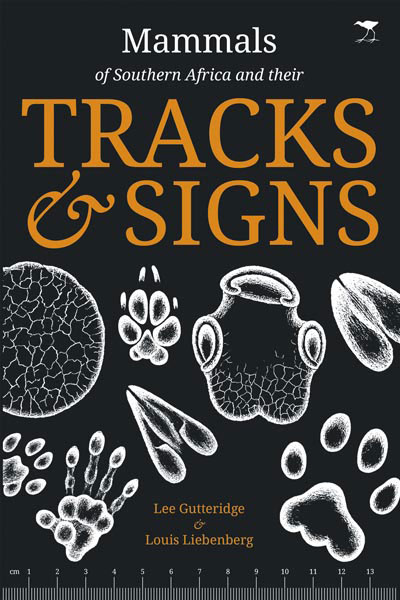 Tracking is a much-loved, yet difficult, subject that attracts at least some of the attention of almost every bush-goer who ventures into the wild places of southern Africa. The ability to accurately read difficult, partial, or little-seen signs left in the soil or sand is rare and largely the domain of professionals.
Tracking is a much-loved, yet difficult, subject that attracts at least some of the attention of almost every bush-goer who ventures into the wild places of southern Africa. The ability to accurately read difficult, partial, or little-seen signs left in the soil or sand is rare and largely the domain of professionals. -
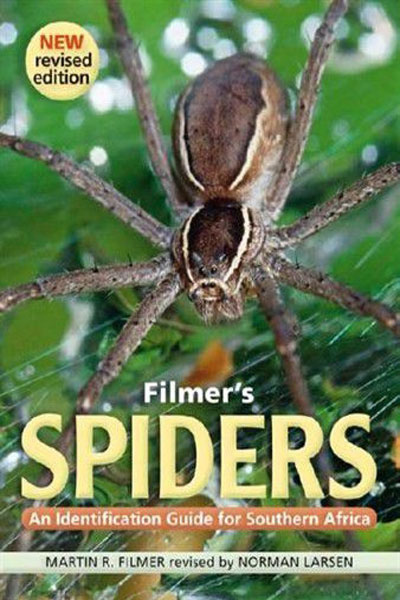 Fully revised and updated, Filmer’s spiders: an identification guide to Southern Africa features all 63 families of spider that occur in this region. A fresh layout, full-colour photographs throughout – many of them new – and diagrams of diagnostic features make this a quick and easy guide for use in the field. The spiders are grouped into web-living, ground-living, and plant-living species to aid identification.
Fully revised and updated, Filmer’s spiders: an identification guide to Southern Africa features all 63 families of spider that occur in this region. A fresh layout, full-colour photographs throughout – many of them new – and diagrams of diagnostic features make this a quick and easy guide for use in the field. The spiders are grouped into web-living, ground-living, and plant-living species to aid identification. -
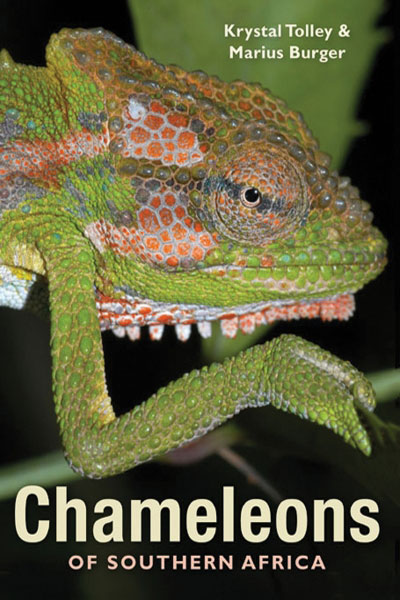 Chameleons are fascinating creatures: they almost always evoke in people a strong response, be it delight, wonder, or fear. Chameleons of Southern Africa explores this interesting group of lizards and discusses their strange and unusual, sometimes unnerving, characteristics. It presents an overview of all types of chameleons (of which there are up to 160 species in total, worldwide), their history, geographic distribution (restricted mainly to Madagascar and Africa), reproduction, behaviour and their relationships to each other.
Chameleons are fascinating creatures: they almost always evoke in people a strong response, be it delight, wonder, or fear. Chameleons of Southern Africa explores this interesting group of lizards and discusses their strange and unusual, sometimes unnerving, characteristics. It presents an overview of all types of chameleons (of which there are up to 160 species in total, worldwide), their history, geographic distribution (restricted mainly to Madagascar and Africa), reproduction, behaviour and their relationships to each other. -
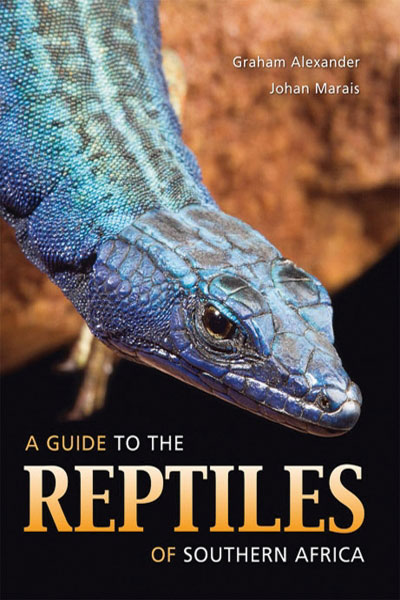 Drawing on the latest scientific research, the authors introduce the book with a discussion of reptile identification, diversity, biology, distribution patterns, and where to find and observe them, as well as unravelling the facts and fallacies of snakebites. Written in a lively and accessible way, the subsequent chapters offer insight into: Identification to group level, with an inclusive list of related species A detailed description of appearance, together with colourful images Biology and behaviour of each group
Drawing on the latest scientific research, the authors introduce the book with a discussion of reptile identification, diversity, biology, distribution patterns, and where to find and observe them, as well as unravelling the facts and fallacies of snakebites. Written in a lively and accessible way, the subsequent chapters offer insight into: Identification to group level, with an inclusive list of related species A detailed description of appearance, together with colourful images Biology and behaviour of each group -
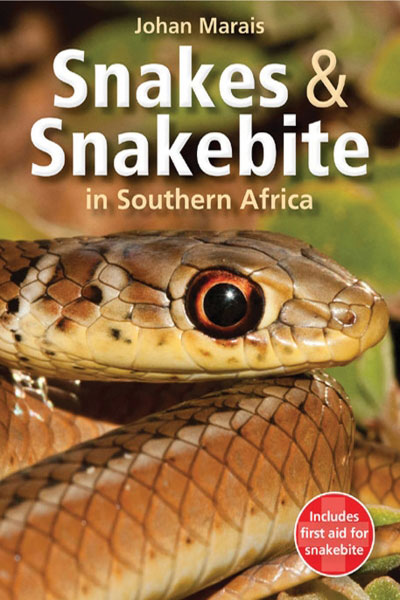 An essential guide to identifying all dangerous snakes and common harmless snakes in southern Africa, as well as quick and important practical advice on first aid measures in the case of snakebite. Simple icons, distribution maps, succinct text and numerous full-colour photographs assist with easy identification of snakes commonly encountered in the region. Symptoms and treatment of snakebites are described, providing the reader with vital first-aid information.
An essential guide to identifying all dangerous snakes and common harmless snakes in southern Africa, as well as quick and important practical advice on first aid measures in the case of snakebite. Simple icons, distribution maps, succinct text and numerous full-colour photographs assist with easy identification of snakes commonly encountered in the region. Symptoms and treatment of snakebites are described, providing the reader with vital first-aid information. -
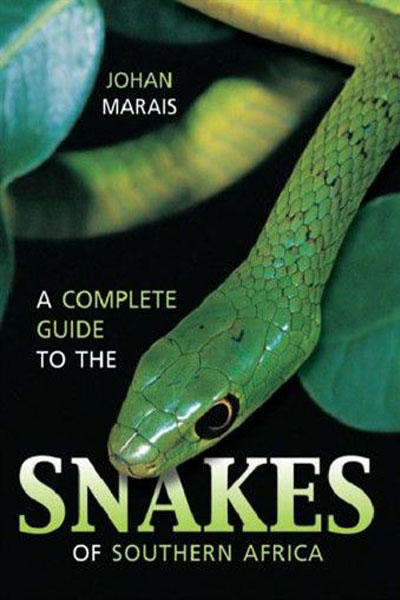 This detailed and comprehensive guide to the 151 snakes indigenous to southern Africa covers all essential aspects of snake biology and behaviour. Now in its second edition, A Complete Guide to the Snakes of Southern Africa has been updated, revised, and expanded to include at least 11 newly discovered and 30 re-classified species and sub-species. New information based on international scientific research has been included in the species accounts relating to behaviour, identification, reproduction, and snake venom.
This detailed and comprehensive guide to the 151 snakes indigenous to southern Africa covers all essential aspects of snake biology and behaviour. Now in its second edition, A Complete Guide to the Snakes of Southern Africa has been updated, revised, and expanded to include at least 11 newly discovered and 30 re-classified species and sub-species. New information based on international scientific research has been included in the species accounts relating to behaviour, identification, reproduction, and snake venom. -
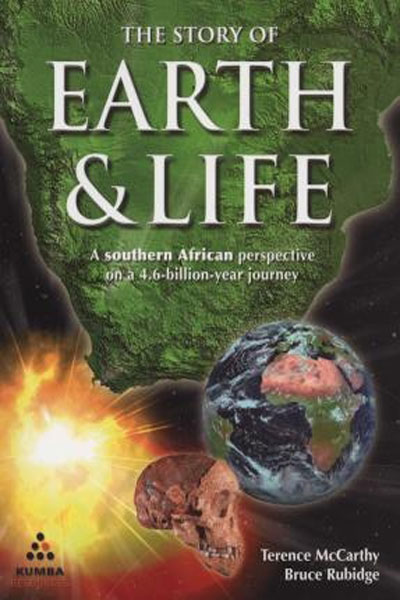 Southern Africa is without equal in terms of geology, a treasure trove of valuable minerals with a geological history dating back some 3 600 million years. In addition, the evolution of plants and animals, especially mammals and dinosaurs, is well preserved in the region, which also has among the best records of the origin of modern man.
Southern Africa is without equal in terms of geology, a treasure trove of valuable minerals with a geological history dating back some 3 600 million years. In addition, the evolution of plants and animals, especially mammals and dinosaurs, is well preserved in the region, which also has among the best records of the origin of modern man. -
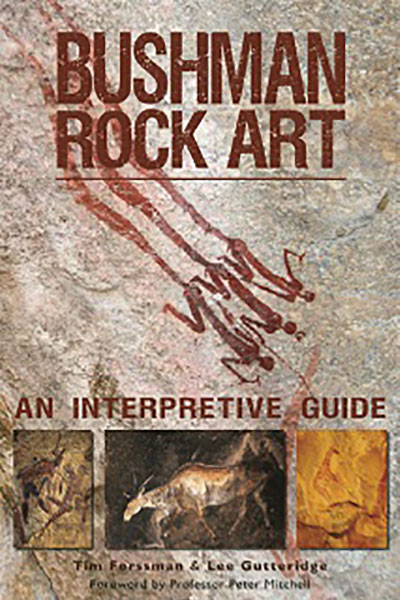 The prehistoric record of southern Africa extends back some 2 million years. The oldest cultural artefacts are stone tools such as hand axes, cleavers, and choppers. In more recent centuries, archaeologists have found an extensive repertoire of artefacts including not only stone tools, but tools of bone, wood and shell as well as beads, jewellery, grinding stones, clothing, fishing equipment, burials and southern Africa's enigmatic rock art.
The prehistoric record of southern Africa extends back some 2 million years. The oldest cultural artefacts are stone tools such as hand axes, cleavers, and choppers. In more recent centuries, archaeologists have found an extensive repertoire of artefacts including not only stone tools, but tools of bone, wood and shell as well as beads, jewellery, grinding stones, clothing, fishing equipment, burials and southern Africa's enigmatic rock art. -
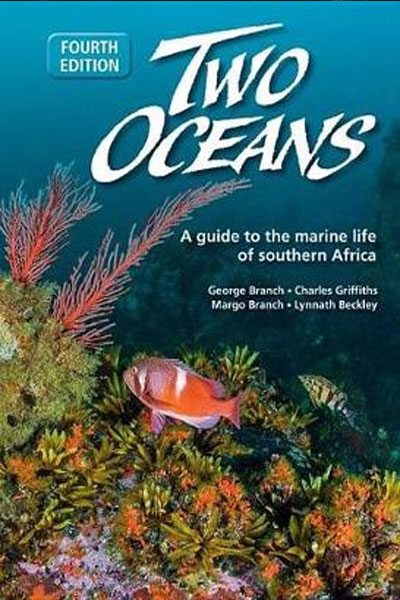 For over two decades Two Oceans has been the pre-eminent book to which scientists, students, divers, and beachcombers turn to identify and learn about marine life, from sponges to whales and seaweeds to dune forests. In this exuberantly colourful, fully revised fourth edition, over 2 000 species are now covered, names and other details have been updated to reflect the latest taxonomy and many new photographs have been added.
For over two decades Two Oceans has been the pre-eminent book to which scientists, students, divers, and beachcombers turn to identify and learn about marine life, from sponges to whales and seaweeds to dune forests. In this exuberantly colourful, fully revised fourth edition, over 2 000 species are now covered, names and other details have been updated to reflect the latest taxonomy and many new photographs have been added. -
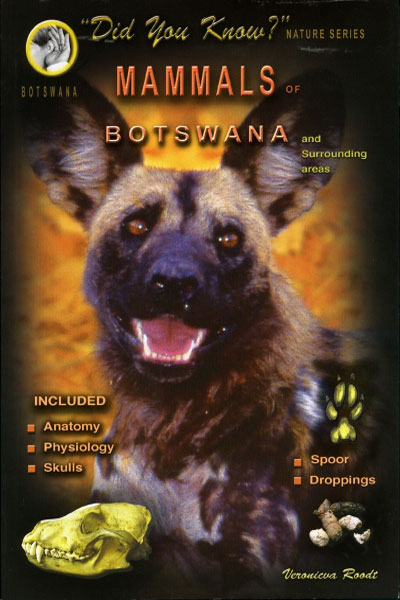 This guide to the mammals of Botswana offers a detailed roundup of more than 80 animals – with maps, travel information and a photographic field guide in a single, handy volume. It covers the six major mammal groups: non-ruminants, ruminants, carnivores, non-carnivorous small mammals, rodents and shrews, and bats – in colour-coded sections for quick reference, and with animal names in seven languages.
This guide to the mammals of Botswana offers a detailed roundup of more than 80 animals – with maps, travel information and a photographic field guide in a single, handy volume. It covers the six major mammal groups: non-ruminants, ruminants, carnivores, non-carnivorous small mammals, rodents and shrews, and bats – in colour-coded sections for quick reference, and with animal names in seven languages. -
 First published in 1986, Smithers' mammals are an authoritative and popular guide to the mammals of Southern Africa. This revised and updated edition incorporates the latest information brought to light by molecular genetics, while remaining accessible to the layperson and handy in the field. Each entry includes an in-depth species description; notes on habitat, behaviour, diet, and conservation status; accurate illustrations and spoor drawings; and a distribution map.
First published in 1986, Smithers' mammals are an authoritative and popular guide to the mammals of Southern Africa. This revised and updated edition incorporates the latest information brought to light by molecular genetics, while remaining accessible to the layperson and handy in the field. Each entry includes an in-depth species description; notes on habitat, behaviour, diet, and conservation status; accurate illustrations and spoor drawings; and a distribution map. -
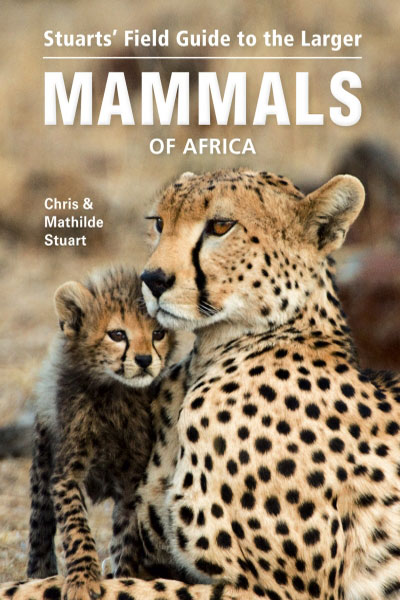 Of the more than 5,500 mammal’s species worldwide, at least 1,200 occur in Africa. Stuarts’ Field Guide to the Larger Mammals of Africa concentrates on the more visible and easily distinguished larger species, as well as some of the more frequently seen smaller mammals. This new edition has been extensively revised, expanded, and redesigned and includes: the most recent research and taxonomy, revised distribution maps and many new images, colour-coded grouping of orders.
Of the more than 5,500 mammal’s species worldwide, at least 1,200 occur in Africa. Stuarts’ Field Guide to the Larger Mammals of Africa concentrates on the more visible and easily distinguished larger species, as well as some of the more frequently seen smaller mammals. This new edition has been extensively revised, expanded, and redesigned and includes: the most recent research and taxonomy, revised distribution maps and many new images, colour-coded grouping of orders. -
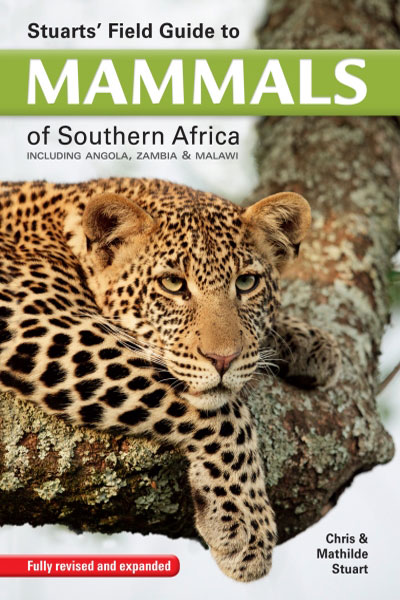 Greater southern Africa has a wealth of mammal species, almost 400 – all of which are covered in this fully updated, comprehensive field guide. Now expanded to include species found in Angola, Zambia, and Malawi, it has also been extensively revised to include: the most recent research and taxonomy, revised distribution maps and many new images.
Greater southern Africa has a wealth of mammal species, almost 400 – all of which are covered in this fully updated, comprehensive field guide. Now expanded to include species found in Angola, Zambia, and Malawi, it has also been extensively revised to include: the most recent research and taxonomy, revised distribution maps and many new images. -
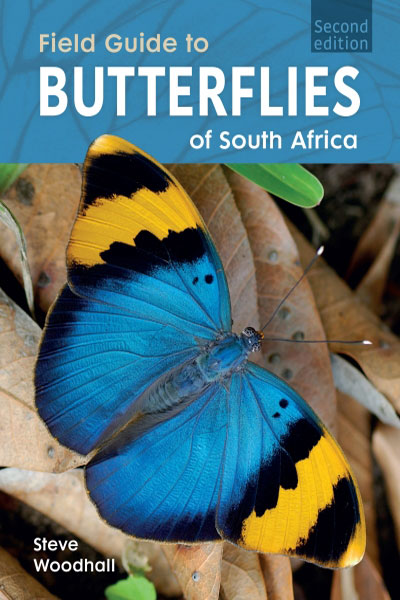 Field Guide to Butterflies of South Africa is designed for easy, rapid identification of all butterflies likely to be seen in South Africa. Following a worldwide trend to butterfly watching, readers are encouraged to observe behaviour rather than collect specimens. A detailed introductory section discusses butterfly biology, behaviour and anatomy, and butterfly families and subfamilies.
Field Guide to Butterflies of South Africa is designed for easy, rapid identification of all butterflies likely to be seen in South Africa. Following a worldwide trend to butterfly watching, readers are encouraged to observe behaviour rather than collect specimens. A detailed introductory section discusses butterfly biology, behaviour and anatomy, and butterfly families and subfamilies. -
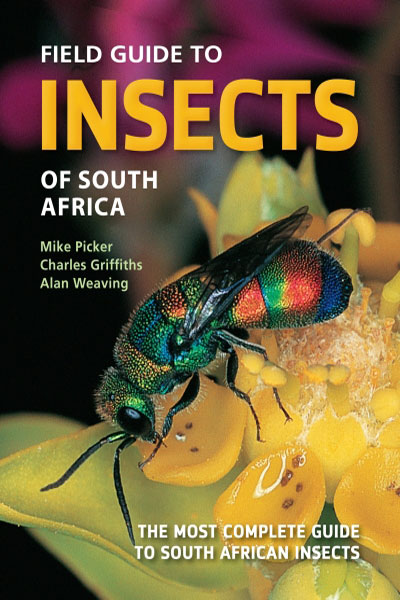 This is an updated and revised edition of the largest, most authoritative field guide to the insect fauna of South Africa, with detailed descriptions and images of some 1,500 of the most common, most economically and ecologically important, and most interesting and attractive insects in the region.
This is an updated and revised edition of the largest, most authoritative field guide to the insect fauna of South Africa, with detailed descriptions and images of some 1,500 of the most common, most economically and ecologically important, and most interesting and attractive insects in the region. -
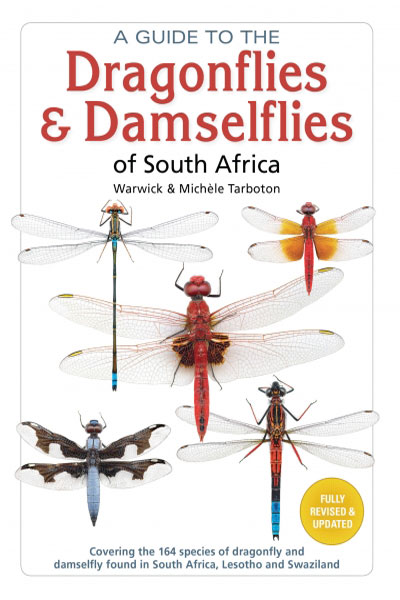 In this fully revised edition of A Guide to the Dragonflies & Damselflies of South Africa, all 164 species known to occur in South Africa, Lesotho and Swaziland are described and illustrated, grouped according to family (six dragonfly and six damselfly families). The species entries feature scans of live insects (close-up and side-view images) and photographs of specimens in their natural environment and showing key behaviours.
In this fully revised edition of A Guide to the Dragonflies & Damselflies of South Africa, all 164 species known to occur in South Africa, Lesotho and Swaziland are described and illustrated, grouped according to family (six dragonfly and six damselfly families). The species entries feature scans of live insects (close-up and side-view images) and photographs of specimens in their natural environment and showing key behaviours. -
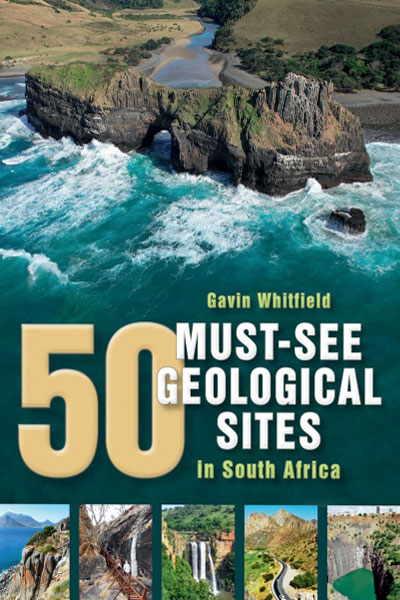 The book presents 50 of the most recognizable and geologically interesting sites around South Africa, including some of palaeontological or historical renown and some of mining interest. The diverse selection includes sites such as Chapman’s Peak, Howick Falls, Walter Sisulu National Botanical Gardens, Mapungubwe, Tswaing Meteorite Crater and the Fraserburg Fossil Surface.
The book presents 50 of the most recognizable and geologically interesting sites around South Africa, including some of palaeontological or historical renown and some of mining interest. The diverse selection includes sites such as Chapman’s Peak, Howick Falls, Walter Sisulu National Botanical Gardens, Mapungubwe, Tswaing Meteorite Crater and the Fraserburg Fossil Surface. -
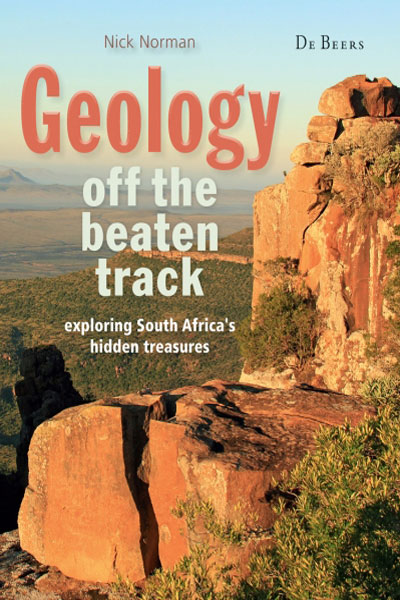 Geology off the beaten track follows on the success of author Nick Norman’s earlier Geological Journeys (co-authored with Gavin Whitfield), which has sold more than 20 000 copies in the last 6 years. This new book helps readers understand and interpret the geology along SA’s regional and other less-travelled roads. It features 13 detailed routes across the country, taking in geologically interesting areas such as the Richtersveld, Cape winelands and the Valley of Desolation near Graaff-Reinet. The text is richly illustrated with photos and explanatory diagrams, making it suitable for armchair travellers too. Maps for all the routes indicate key geosites, with GPS readings to pinpoint their location.
Geology off the beaten track follows on the success of author Nick Norman’s earlier Geological Journeys (co-authored with Gavin Whitfield), which has sold more than 20 000 copies in the last 6 years. This new book helps readers understand and interpret the geology along SA’s regional and other less-travelled roads. It features 13 detailed routes across the country, taking in geologically interesting areas such as the Richtersveld, Cape winelands and the Valley of Desolation near Graaff-Reinet. The text is richly illustrated with photos and explanatory diagrams, making it suitable for armchair travellers too. Maps for all the routes indicate key geosites, with GPS readings to pinpoint their location. -
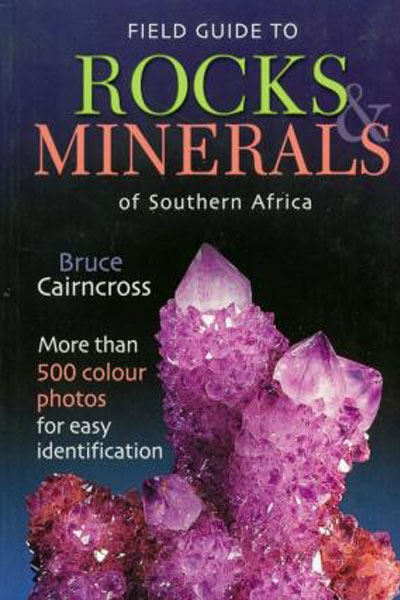 Southern Africa boasts many spectacular examples of rocks and minerals; volcanic lava make up the dramatic Drakensberg mountain range, granite mountains form stunning scenery in Namibia and Zimbabwe, and some of the most ancient rocks on Earth - over 3000 million years old - are to be found on the subcontinent. The region is home to many important and interesting minerals, as well as a wide array of beautiful gemstones - diamonds from South Africa.
Southern Africa boasts many spectacular examples of rocks and minerals; volcanic lava make up the dramatic Drakensberg mountain range, granite mountains form stunning scenery in Namibia and Zimbabwe, and some of the most ancient rocks on Earth - over 3000 million years old - are to be found on the subcontinent. The region is home to many important and interesting minerals, as well as a wide array of beautiful gemstones - diamonds from South Africa. -
 Professor Terence McCarthy with 'How on Earth? opens the door to normally unimaginable processes, changes and incidences of Earth history. Perhaps the most important attributes that set humans apart from other animals are our ability to reason, to articulate our thoughts and to convey them to others.
Professor Terence McCarthy with 'How on Earth? opens the door to normally unimaginable processes, changes and incidences of Earth history. Perhaps the most important attributes that set humans apart from other animals are our ability to reason, to articulate our thoughts and to convey them to others. -
 World-renowned wildlife trackers Alex van den Heever and Renias Mhlongo have spent more than two decades working together, tracking leopards and lions at Londolozi, jaguars in South America and grizzly bears in the United States. In Changing a Leopard's Spots, Alex shares stories from his life with Renias, including the successes, failures, dramas, laughter, disappointments, and highlights.
World-renowned wildlife trackers Alex van den Heever and Renias Mhlongo have spent more than two decades working together, tracking leopards and lions at Londolozi, jaguars in South America and grizzly bears in the United States. In Changing a Leopard's Spots, Alex shares stories from his life with Renias, including the successes, failures, dramas, laughter, disappointments, and highlights. -
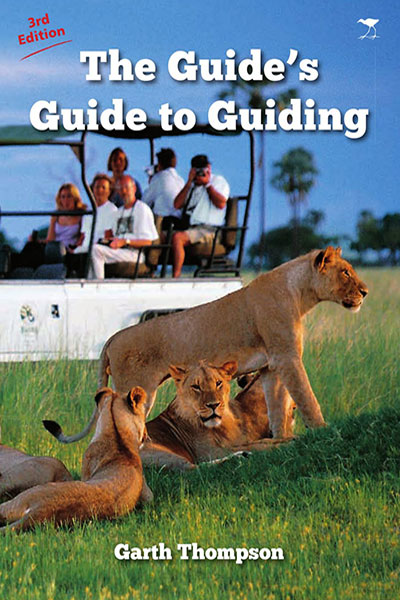 Guides Guide to Guiding Kindle Edition. The Guide's Guide to Guiding is written by veteran wildlife safari guide Garth Thompson and is aimed at informing and educating those that have a love and appreciation for the great outdoors – and a desire to share this passion with others.
Guides Guide to Guiding Kindle Edition. The Guide's Guide to Guiding is written by veteran wildlife safari guide Garth Thompson and is aimed at informing and educating those that have a love and appreciation for the great outdoors – and a desire to share this passion with others.

